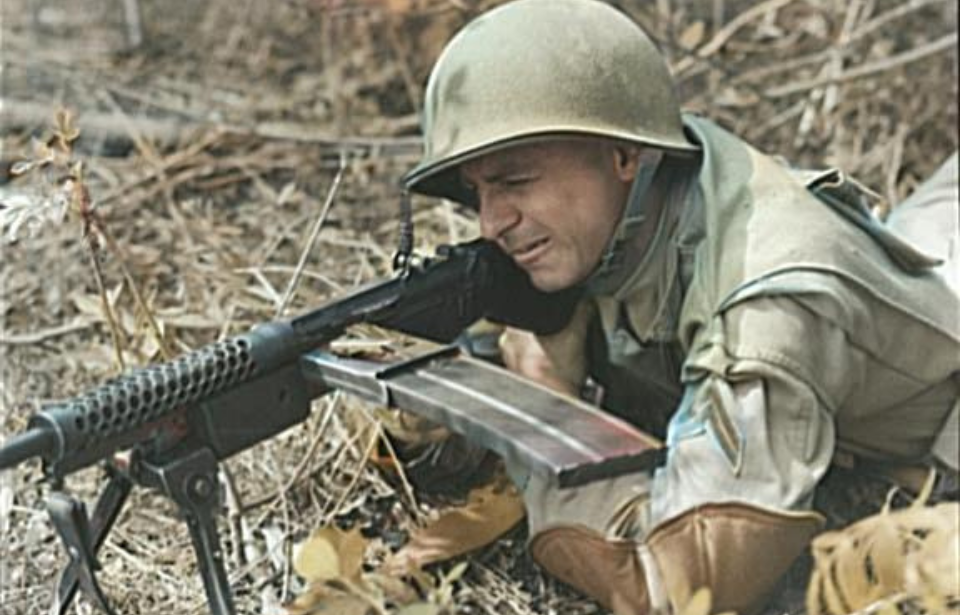During the Second World War, numerous firearms were created to meet the scale of the conflict’s demands for improved military equipment. Melvin Johnson was one of the individuals who aimed to design an exceptional battlefield weapon, creating the M1941 Johnson light machine gun. Although it was not commonly issued as a standard weapon, it earned respect from the elite units of the US military.
Development of the M1941 Johnson light machine gun
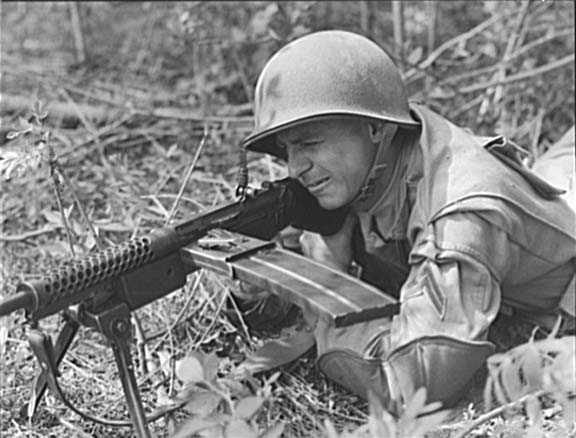
The M1941 Johnson light machine gun originated from the mind of lawyer and US Marine Corps Reserve Capt. Melvin Johnson. Unimpressed with the US Army’s M1 Garand, he wanted to develop a semi-automatic service rifle that could outperform “the greatest battle implement ever devised.”
Johnson designed, built and tested both a semi-automatic rifle and the prototype for a light machine gun. Both weapons shared a number of similarities, most notably their short recoil with a rotating bolt. While there were hopes the rifle would be adopted by the US Army, it was ultimately turned down. The light machine gun received a similar reception, prompting Johnson to turn to the international market.
Outside of the Dutch East Indies, little interest was shown in the semi-automatic rifle. There was hope the light machine gun would receive orders, given how many were impressed with the weapon, but none came about.
M1941 Johnson light machine gun specs

Two versions of the Johnson light machine gun were developed over the years: the M1941, with a wooden stock and metal bipod, and the M1944, which featured a wooden monopod and tubular steel butt. Each unit cost $265, with 9,500 produced between 1941-45.
At 13 pounds, the M1941 was extremely lightweight for a machine gun. It featured a basic recoil-operated mechanism with a removable barrel, allowing the recoil to travel in a direct line to the shoulder of the operator, minimizing muzzle climb. While preferred, this meant the sights had to be placed higher up on the firearm.
While early versions of the Johnson M1941 light machine gun featured a mount for a bayonet, later ones didn’t. Focus was, instead, placed upon firepower. It featured a curved, single-column 20-round magazine attached to the left side of the receiver, with feed lips machined into it for increased reliability.
The M1941’s rate of fire stood between 200-600 rounds per minute, with other estimates widening that further, to between 300-900. It chambered the .30-06 Springfield cartridge. Along with being loaded with the M1903 Springfield’s five-round charger, rounds could also be inserted by stripper clip at the ejection port. Single rounds could also be fed into the breech.
Similarities to the German FG 42
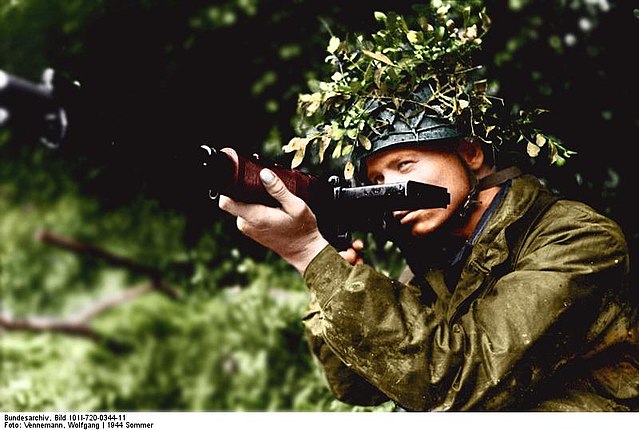
Around the same time the M1941 Johnson light machine gun entered production, so, too, did the German Fallschirmjägergewehr 42 – better known as the FG 42. Designed for the Fallschirmjäger airborne infantry, it placed the physical characteristics of a light machine gun into a shorter frame. The selective-fire automatic rifle was considered among the most advanced weapons to debut during the Second World War, and it influenced small-arms production in the post-war era.
Many have compared the FG 42 to the M1941, as they share a number of similarities. Both used an open-bolt system while set to automatic and a closed-bolt when switched to semi-automatic mode. As well, they were fed from the left side, and both were extremely awkward to lug around when loaded, due to the location of their magazines. When it came to the M941 Johnson light machine gun, this resulted in the weapon being unbalanced.
It should be noted that, while the two were similar, there’s no evidence to show either had an influence on the other.
Issues emerged with the M1941 Johnson light machine gun
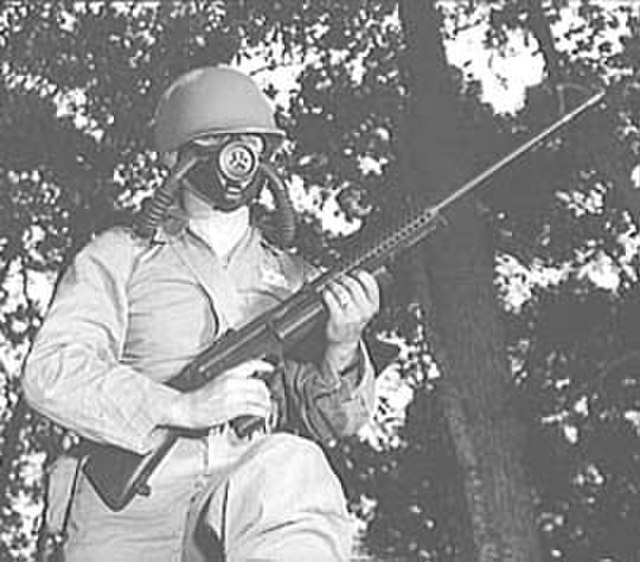
The M1941 Johnson light machine gun, though relatively successful in its niche role, had its own set of challenges. To begin with, it was never a standard-issue weapon, so no dedicated magazine pouch or carrier was ever made for it. Its 20-round magazines were cumbersome to carry and, as mentioned earlier, made the M1941 unsteady when loaded.
Service with the US Marine Corps
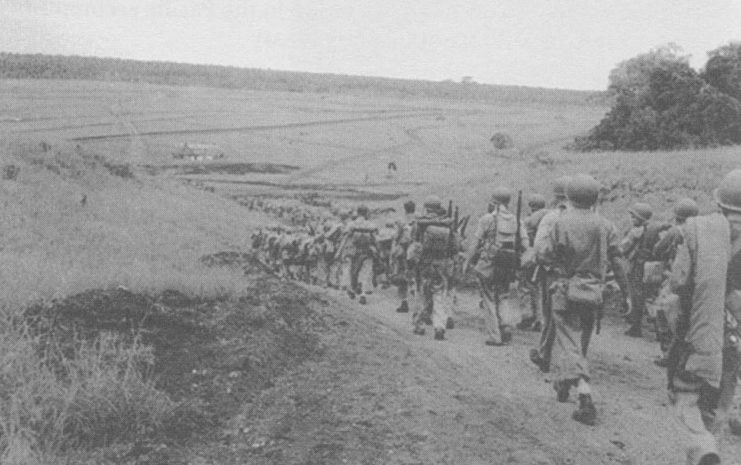
During World War II, a small amount of M1941 Johnson light machine guns were sold to the US military. Those serving in the US Marine Corps held it in high regard, thanks to its effectiveness in a number of battles in the Pacific Theater. After debuting during the Solomon Islands Campaign, it saw use with the First Parachute Battalion during the Guadalcanal Campaign, in particular the battles of Tulagi and Gavutu-Tanambogo and Edson’s Ridge.
Better known as the Battle of Bloody Ridge, the latter engagement was the second of three major Japanese ground offensives in the Guadalcanal Campaign. It was during this time that the M1941 showed its prowess in battle, allowing the Marines to lay down defensive crossfire to save Henderson Field.
The light machine gun also saw extensive use during the Bougainville Campaign in the North Solomon Islands.
First Special Service Force (1SFF)
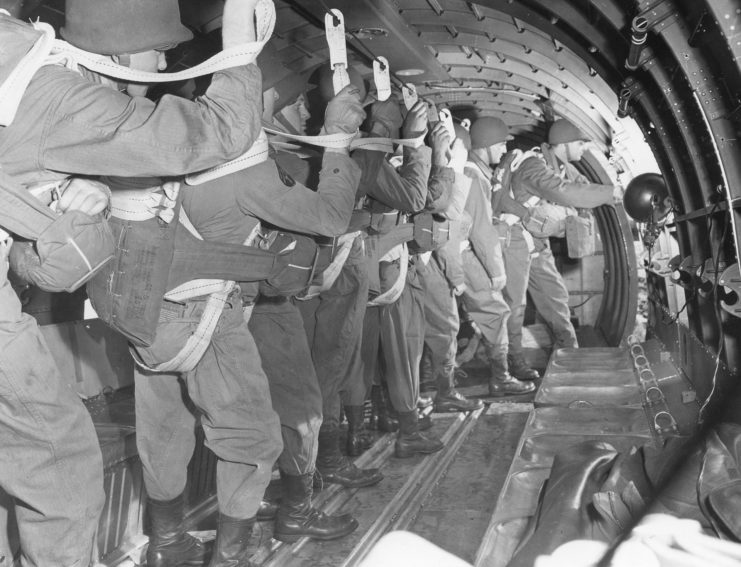
One of the primarily users of the M1941 Johnson light machine gun was the First Special Service Force (1SFF), a commando unit made up of Canadian and American volunteers. Between 1,400-1,800 strong and under the blanket of the US Fifth Army, they were tasked with fighting behind enemy lines in cold weather conditions.
The 1SFF was stationed out of Fort William Henry Harrison, Montana and commanded by Lt. Col. Robert T. Frederick. Prior to being deployed overseas, members were trained in parachuting, mountain warfare, hand-to-hand combat, rock-climbing, stealth tactics, explosive demolition and amphibious warfare. They were also taught how to operate as ski troops, given the conditions under which they would be conducting their missions.
First deployed during the Aleutian Islands Campaign, they then returned to the US to prepare for Project Plough, a mission to parachute into German-occupied Norway and knock out strategic targets. When this was canceled, the 1SSF was sent to Italy to serve alongside the US 36th Infantry Division.
On December 1, 1943, the commando unit launched a surprise attack on the German position on Monte La Difensa, which later served as inspiration for the 1968 movie, The Devil’s Brigade. The mountain assaults continued through to January 8, 1944, with the M1941 Johnson light machine gun featuring heavily in the firefights, due to its power and light weight.
Following this, the 1SSF traveled to the Anzio beachhead, which had been created during Operation Shingle, and launched a shock attack against the Germans. Fighting for 99 days without relief, they raided the right-flank of the beachhead, forcing the enemy soldiers to pull back up to half a mile. They then traveled to southern France to participate in Operation Dragoon, serving with the 1st Airborne Task Force, part of the US Seventh Army, and Task Force One.
The 1SFF was officially disbanded on December 5, 1944. Over the course of the unit’s existence, its members captured 7,000 German prisoners of war (POWs), inflicted 12,000 casualties and amassed an attrition rate of over 600 percent.
Additional use of the M1941 Johnson light machine gun
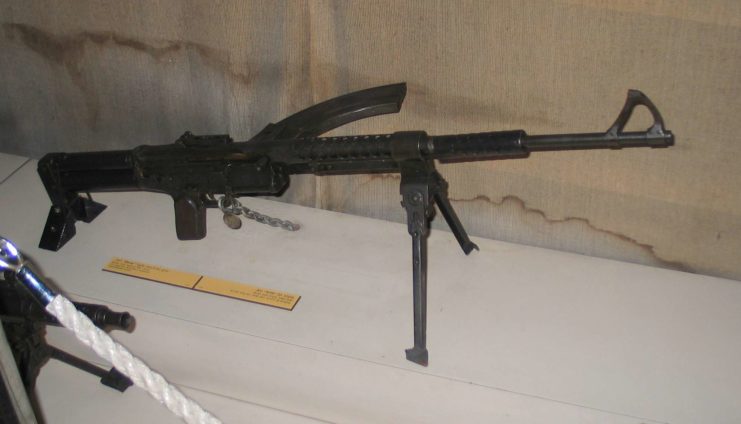
The M1941 Johnson light machine gun found use beyond the American forces. During the Japanese occupation of the Philippines from 1942-45, both the Philippine Constabulary and Army were equipped with it. It continued to serve during the Hukbalahap Rebellion against the Philippine government and was deployed during the Korean War by the Philippine Expeditionary Forces to Korea (PEFTOK).
Fidel Castro‘s forces used the M941 Johnson rifle during the Bay of Pigs, while Marxist revolutionary Ernesto “Che” Guevara reportedly wielded the light machine gun throughout the Cuban Revolution.
Israel also expressed interest in the M1941. Following the 1948 Arab-Israeli War, the Haganah, the precursor to the Israel Defense Forces, developed the Dror, a variant of the weapon that was capable of firing both 7.92 x 57 mm Mauser and .303 British rounds. The inclusion of the latter was due to the availability of British rifle ammunition at the time.
More from us: Bren Light Machine Gun: The British Weapon That Featured Heavily in North Africa
Two versions of the Dror emerged. The first, Pattern 1, with an estimated production of 800-1,000 units, underwent redesign due to feeding system issues. The Pattern 2 variant featured a vertically mounted magazine beneath the receiver. Despite considerable production, the Israeli military phased out the Dror due to its susceptibility to sand-induced jamming.
